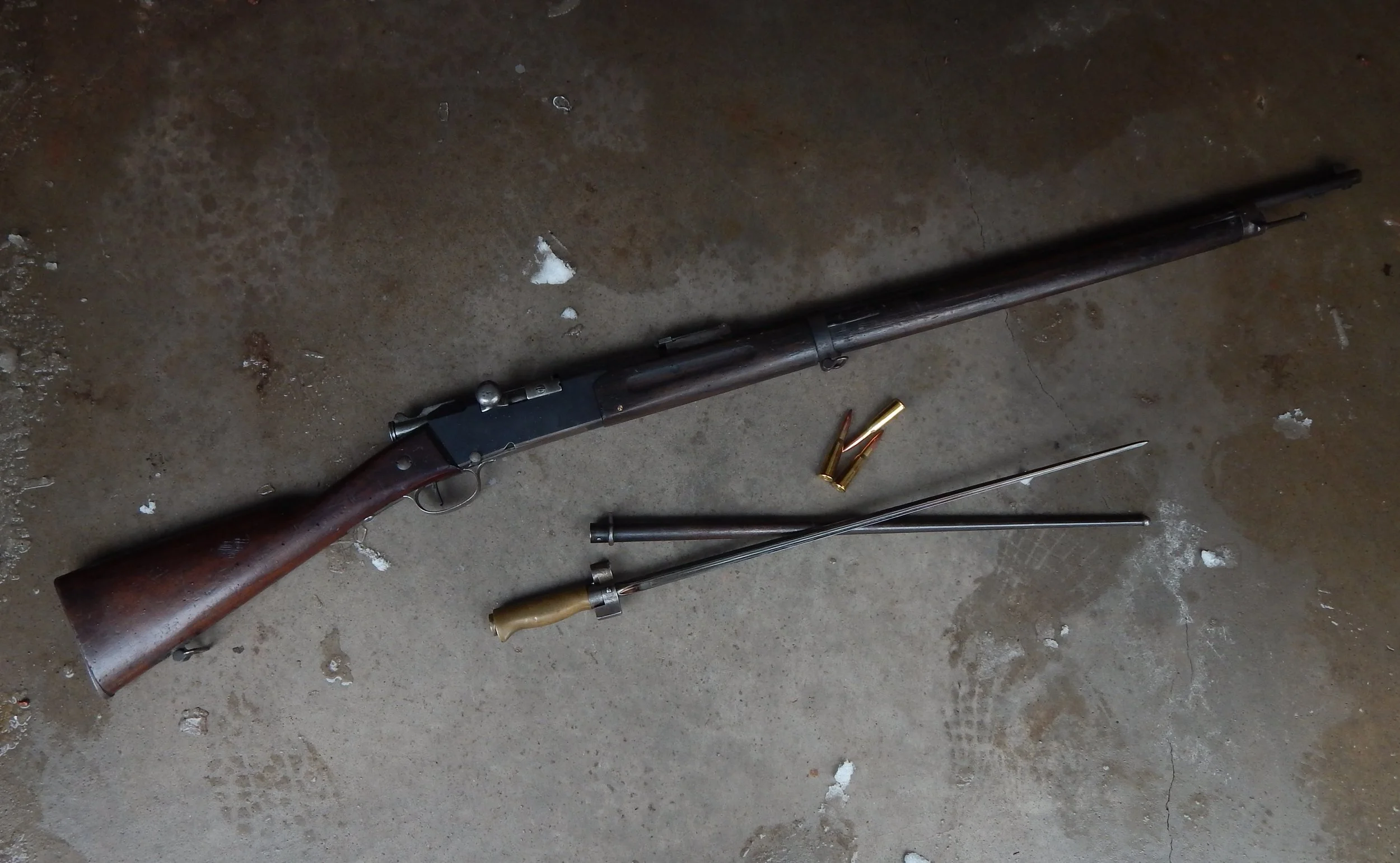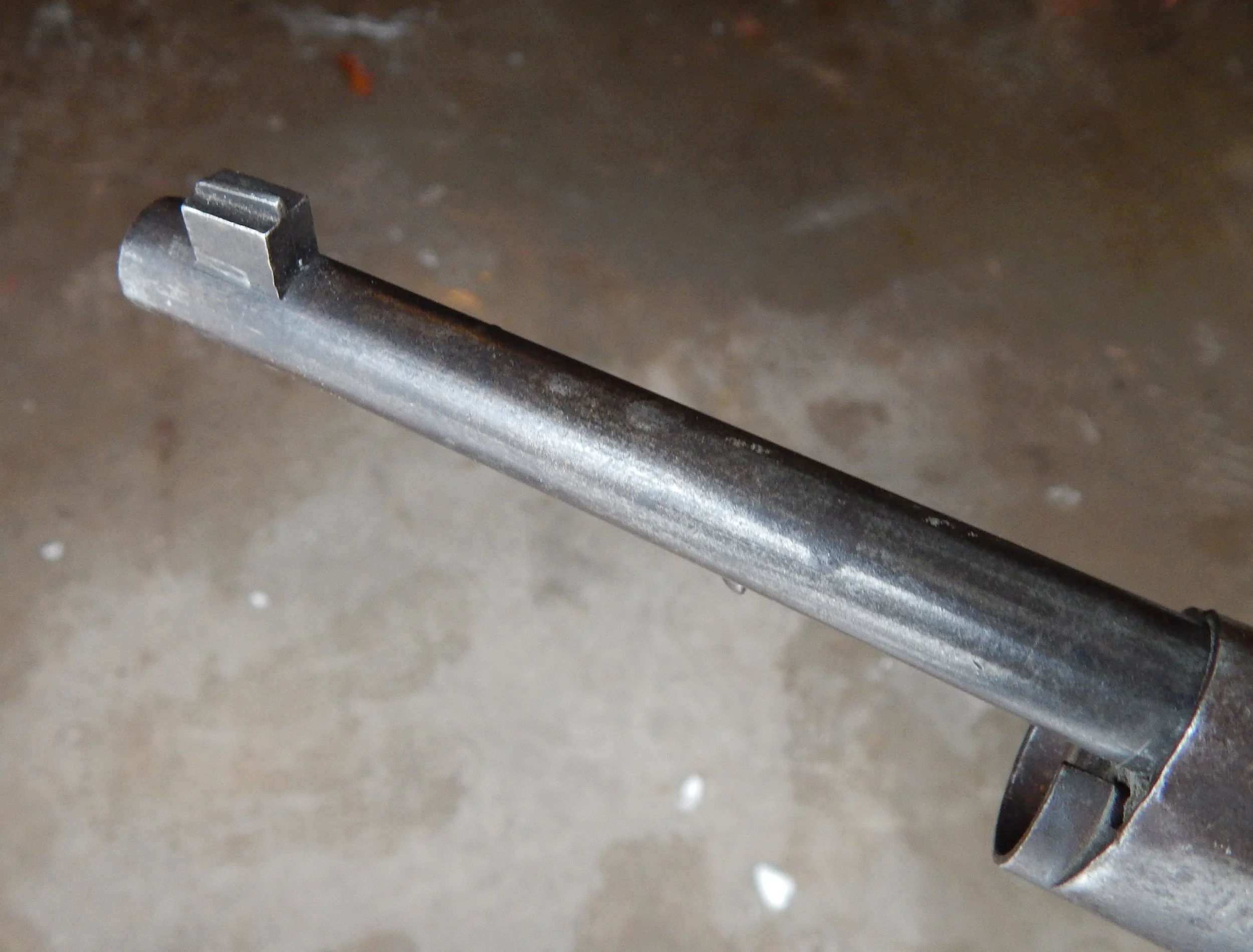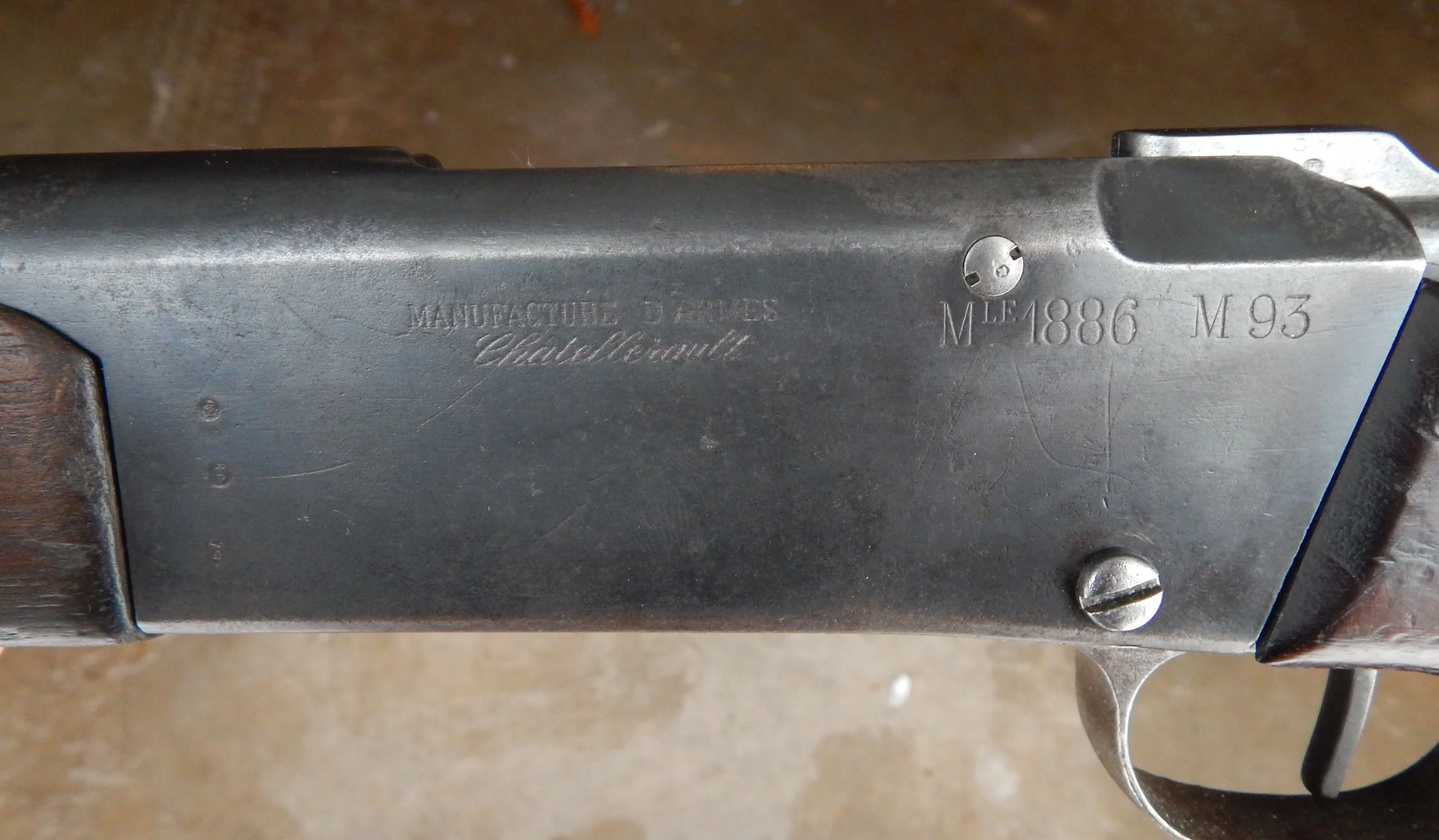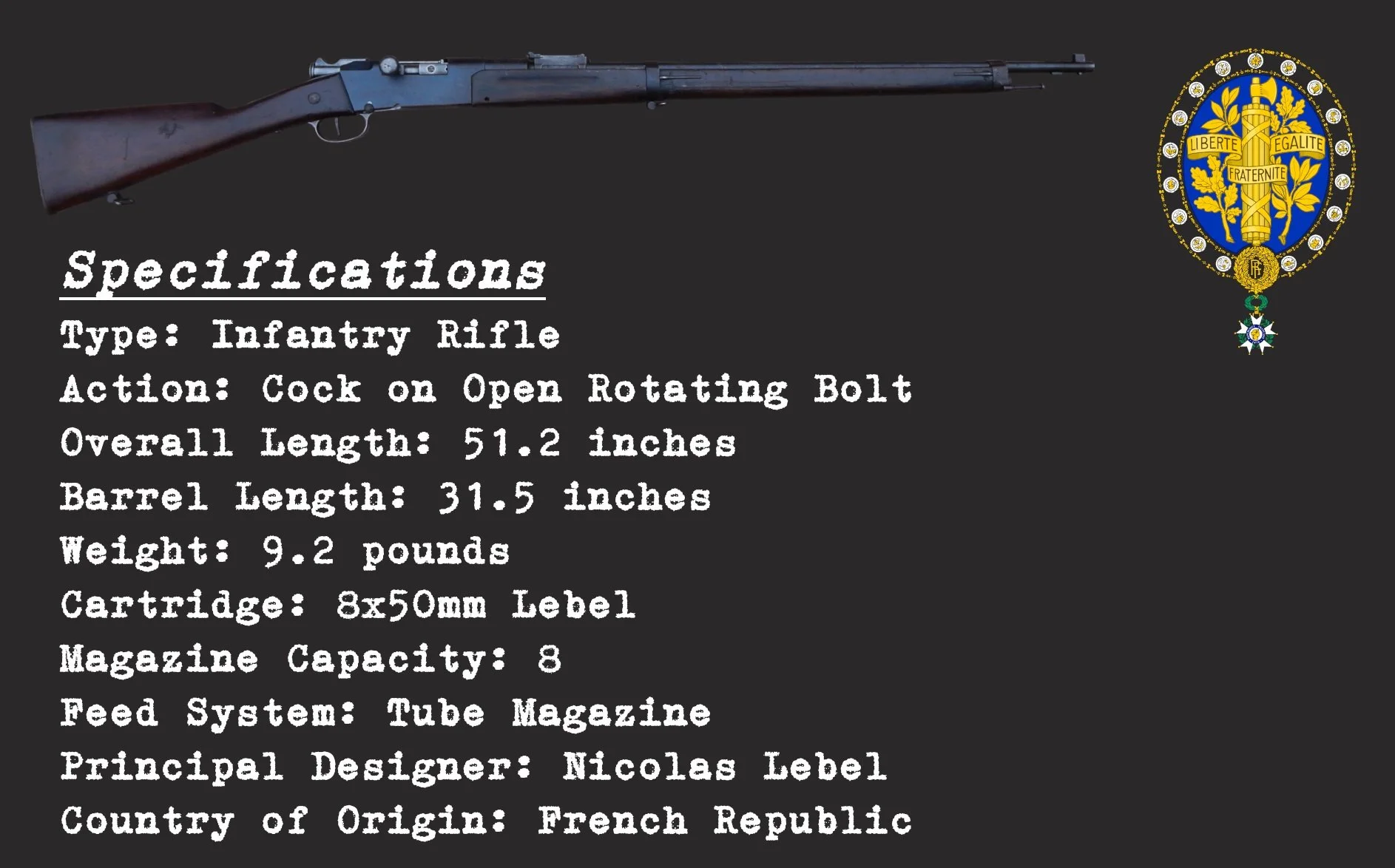Lebel M1886
The first smokeless powder rifle would put represent the most significant advance in small arms technology since the advent of gunpowder itself, but the rifle itself would be rapidly rendered obsolete, despite serving on for more than half a century.
The History
Despite a catastrophic defeat in 1870 at the hands of a newly unified Germany, France was not down for the count, and indeed remained competitive as a major power as the Scramble for Africa heated up. A bitter rival of her German neighbor, France worked diligently to ensure that the weapons of her armed forces were at least the equal of those deployed by the Germans, but a push for a more advanced design of powder would lead to the adoption of the most revolutionary firearm since the shoulder fired musket.
The rear sight of the Lebel. Note the slightly offset notch
France had adopted the Gras rifle in 1874, a single shot black powder bolt rifle. Despite this bringing them to parity with the German Mauser Gewehr 71, that same year the Germans updated their rifles into the Gewehr 71/84, adding a tube magazine to convert their inventory into repeaters. With this in mind the French likewise adopted the Austrian-designed Kropatschek rifles for the Marine Nationale, but a new innovation was needed to truly outpace the Germans, and this would come in the form of a new gunpowder developed by chemist Paul Vieille.
Vieille’s new propellent, dubbed “Poudre B” produced significantly less smoke and fouling than existing powders, as well as much higher operating pressures. This in turn led to a higher velocity on the projectile, with greater accuracy and range. When combined with a necked down 11mm Gras case and a new 8mm jacketed bullet, this produced the 8x50mm Balle M cartridge. A rifle soon followed, being essentially an amalgamation of Kropatschek tube magazine with a modified Gras action, designed by a committee of French officers including Basile Gras, designer of the outgoing rifle, Nicolas Lebel (whose name would be connected to the rifle), who designed the jacketed bullet based on Swiss designs, and others under the leadership of General Baptiste Tramond.
The rear sight flipped forward to reveal the battle sight, as well as the adjustable ladder now lying along the barrel
Prototypes were constructed at Chatellerault, and initial production was ordered in early 1887 with the government arsenal at Chatellerault, followed by Saint Ettienne and Tulle shortly afterward. After initial field use, a program was initiated in 1893 that saw almost all rifles upgraded with an improved gas shield on the bolt and various other small alterations.
When revealed, the Lebel rendered all other small arms obsolete, and triggered a massive arms race both in Europe and around the globe. Woefully outclassing the German Gewehr 71/84, they were quick to react, adopting the smokeless Gewehr 88 just two years later, itself completely outclassing the Lebel. Other nations would also move quickly, and by the turn of the 20th century all major powers were equipped with smokeless powder weapons, all of which were markedly superior to the Lebel.
The front sight of the rifle, with the socket for the hilt of the bayonet visible below
The main handicap of the Lebel was the tube magazine, which was both cumbersome to load and caused odd changes in the weapon’s point of balance as it was emptied. Compared to the Mannlicher clip and later Mauser charger, it rapidly fell behind, and even as the wider world moved into a second generation of smokeless powder rifles the French remained standardized on the Lebel, despite the limited adoption of the improved Berthier system (based on a Lebel bolt with a three round Mannlicher clip feed system, primarily manufactured as carbines).
By the time the Great War began in 1914 it was the oldest first line rifle in service with a major power, and although it would be a symbol of the Poilu in that conflict, the Berthier would mostly supplant it by the end. Despite both this and the development of the MAS36 and work on semi-automatic designs, the Lebel would remain in service, both as a rifle and the R35 carbine throughout the Second World War, only being retired after 1945, following over a half century of service.
The action of the rifle, clearly showing the takedown screw in the bolt, as well as the cutoff switch above the trigger
The Design
The Lebel uses a cock on open rotating bolt action, based on the earlier black powder Gras. It uses a rather old system with a detachable bolt head, retained by a non-captive screw (a serious problem in the opinion of the author), requiring fully removing said screw in order to remove the bolt for cleaning.
Feeding is acomplished via a Kropatschek type tube magazine under the barrel, with a capacity of eight cartridges (one notable feature that came about with the adoption of the Balle N spitzer ammunition was a recess around the primer of the new cartridges, intended to prevent a potential nose-to-tail discharge due to impacting a primer with the bullet of the cartridge behind it). A simple cartridge elevator is actuated by striking a lug on the rear of it with the bolt, requiring the bolt to be operated with some force in order to properly function. A magazine cutoff is located just above the trigger, and when engaged it locks the elevator in the upper position, turning it into a feed tray.
The markings on the side of the receiver, showing the manufacturer’s markings, model designation and proofs
In addition to the eight cartridges in the magazine, a ninth can be placed in the elevator, and a tenth can be placed directly into the chamber (although the latter would be contrary to French doctrine). No manual safety is provided, due to French doctrine requiring soldiers to carry their rifles with an empty chamber until ordered to fire by their officers.
The sights are a simple v-notch ladder rear sight, with a series of battlesight settings, and when flipped up the ladder is adjustable from 900 to 2,000 meters. When flipped forward a close range sight is revealed, set for 250 meters.
One final note a bout the Lebel rifle is its distinctive stock configuration, with a large steel receiver separating a wooden buttstock and forestock. This allows for faster production of the stock, as well as conferring greater strength by eliminating what would be the thinnest portion of the stock on most other rifles.
This Example
The Lebel rifle seen here is an M1886/M93 manufactured by Chatellerault, with a replacement barrel installed by Tulle in 1915. It is in generally very good condition, with its finish strong throughout. A wobble is present in the forestock, but no other notable issues are apparent.
Opinions
The Lebel is an iconic weapon of the First World War, equipping the brave French Poilus who manned the endless trenches of the Western Front to defend their homeland from the invading Germans. It is also the progenitor of all modern firearms due to its innovative smokeless powder cartridge.
Despite this, the weapon was made with older technology when it was first designed, as as mentioned above was rendered obsolete within two years. When the Great War began it was almost thirty years old, in an era when small arms technology was advancing at a rate similar to modern electronics, and thus thoroughly outclassed.
Regarding the rifle itself, its tube loading system, while interesting, is extraordinarily cumbersome even under calm conditions (although the unique tactile experience of the next round being moved onto the elevator when the bolt is locked is quite satisfying). In addition, the sights are absolutely miniscule, indeed being among the worst the author has encountered on a military rifle. Furthermore the rifle is very long and heavy, combining with the other features to make for a generally very ungainly weapon.
A French soldier with his Lebel rifle (foreground) on a line near the Somme in early 1918
Imperial War Museum
Observed Values and Frequency
Updated: February, 2024
AVERAGE VALUE (USD): $800 - $1,200
FREQUENCY: Rare
COLLECTOR’S NOTES: Often found in poor condition







